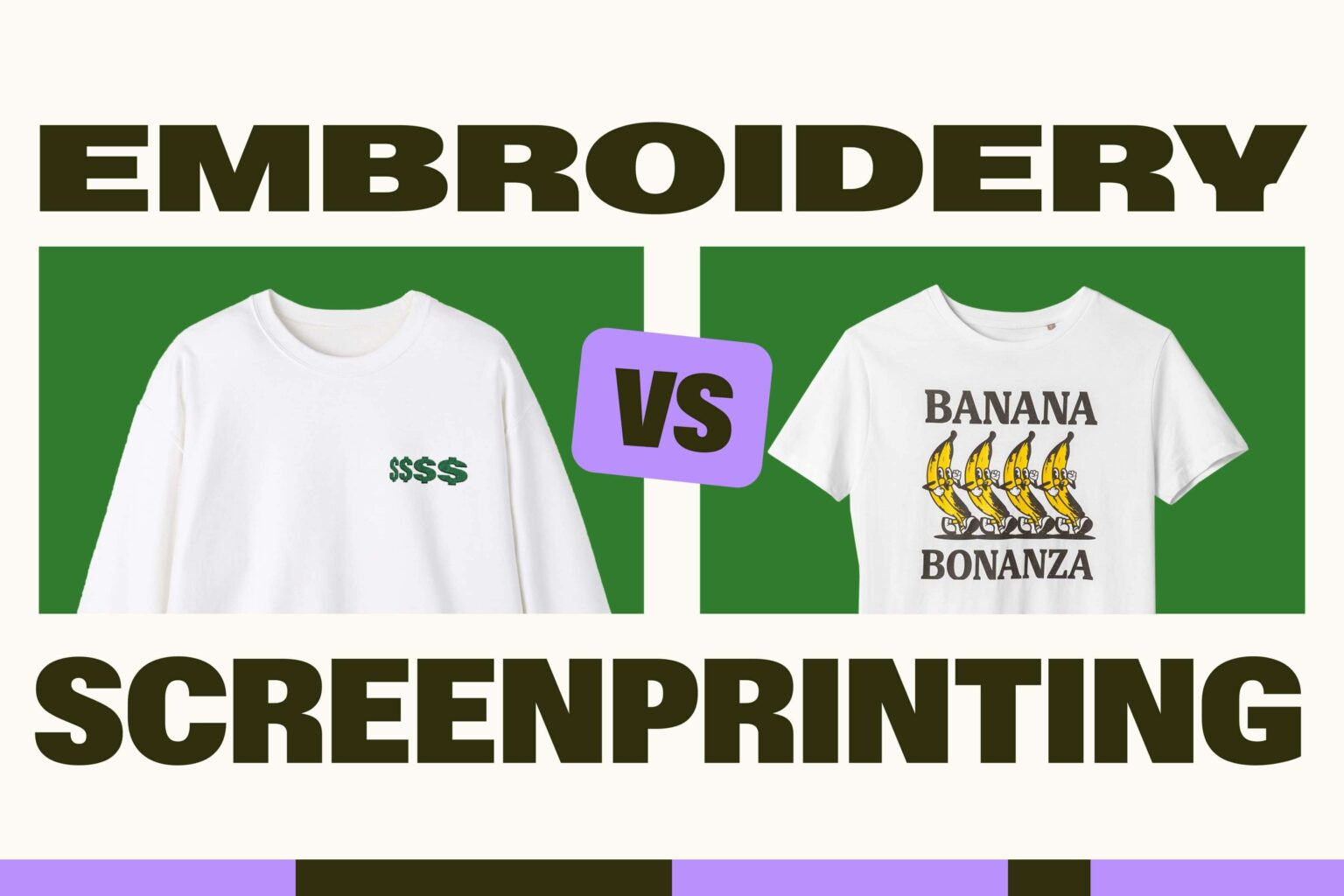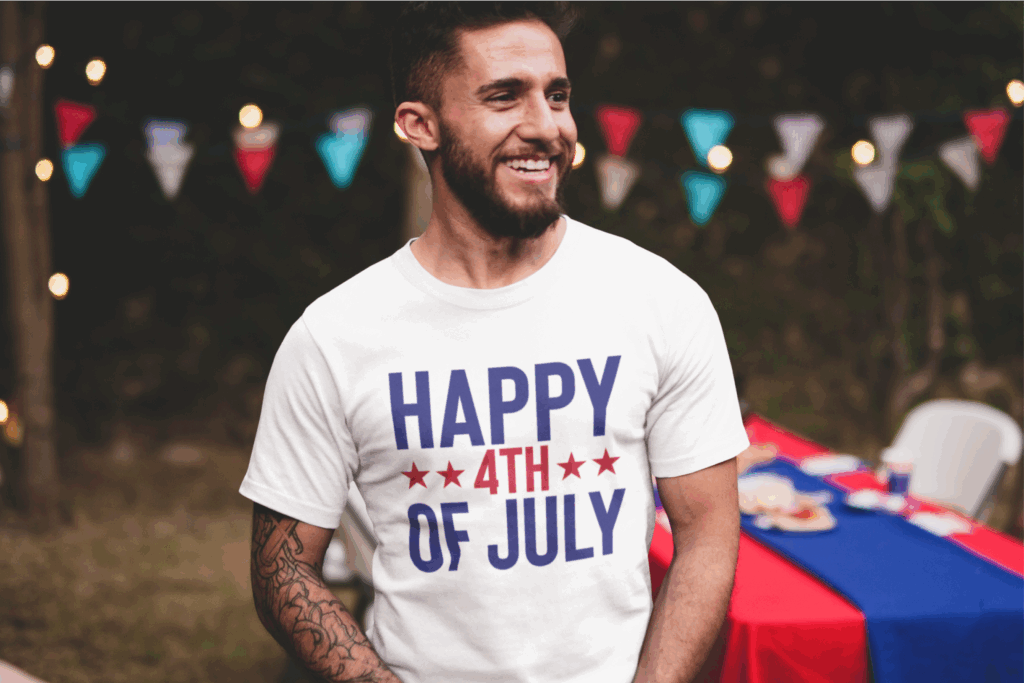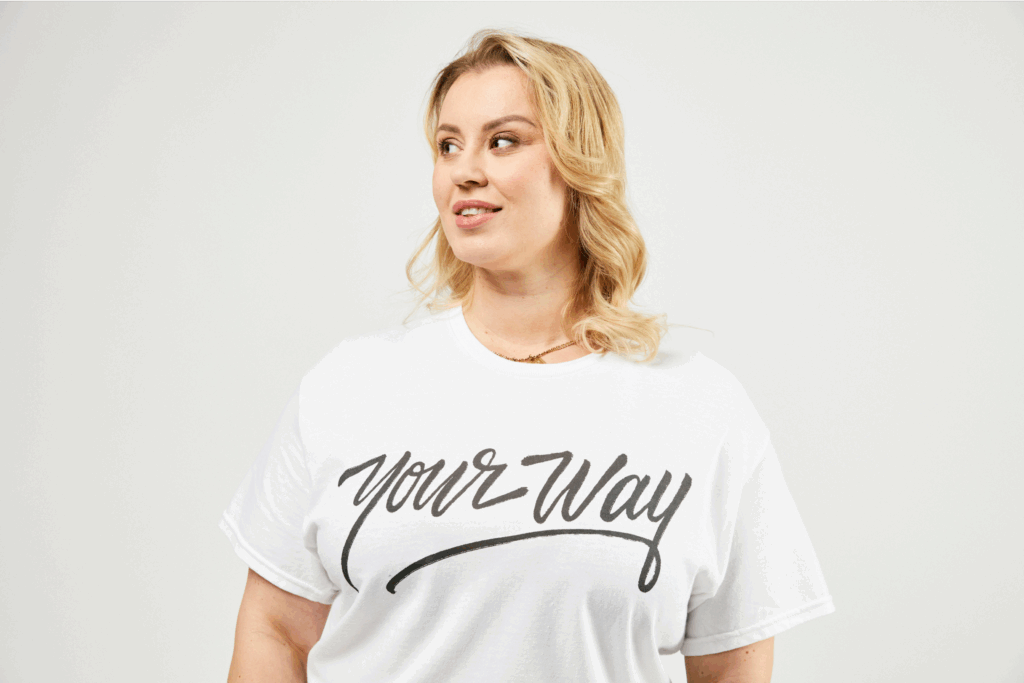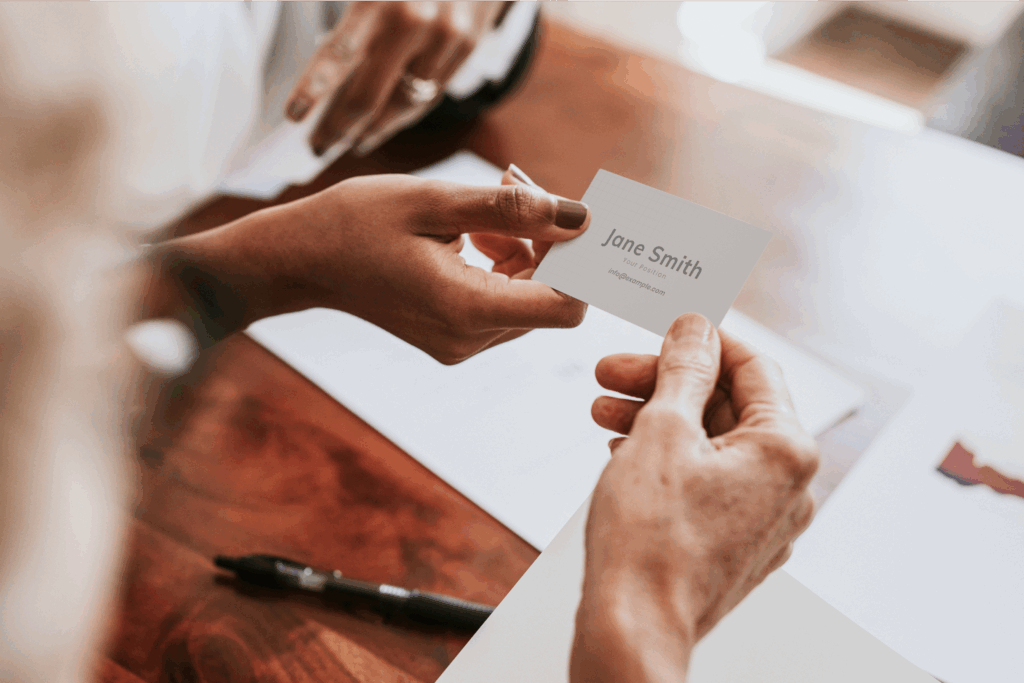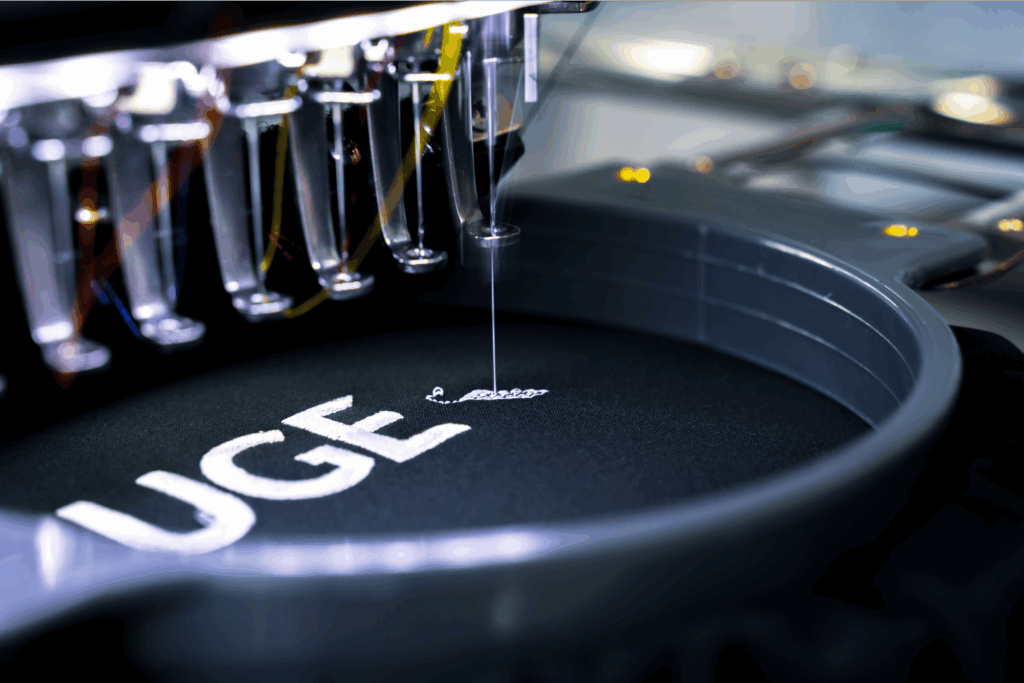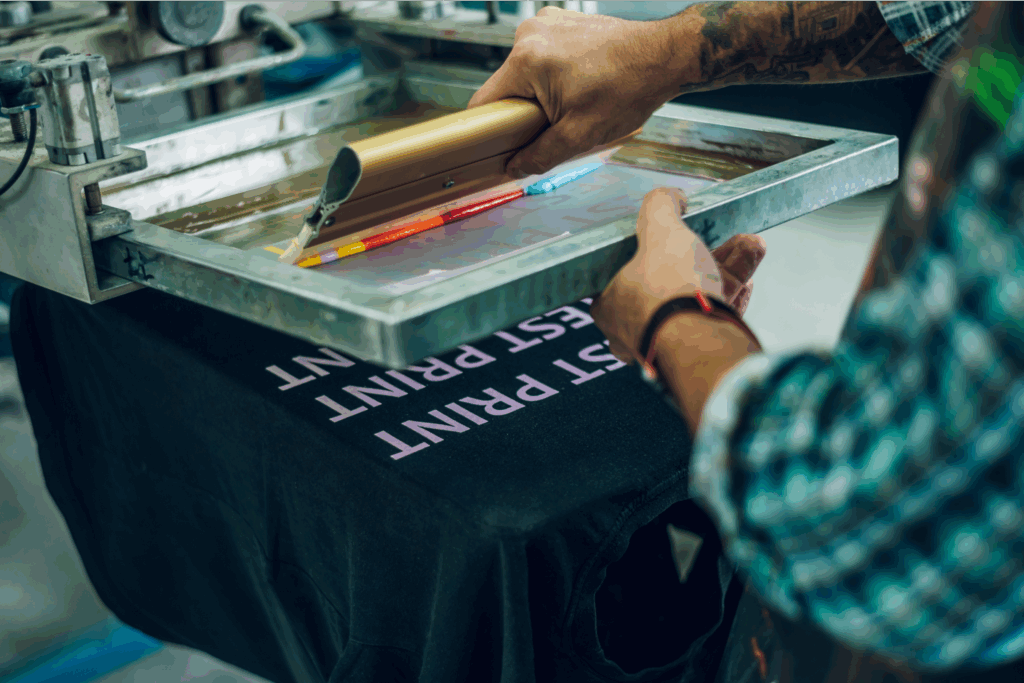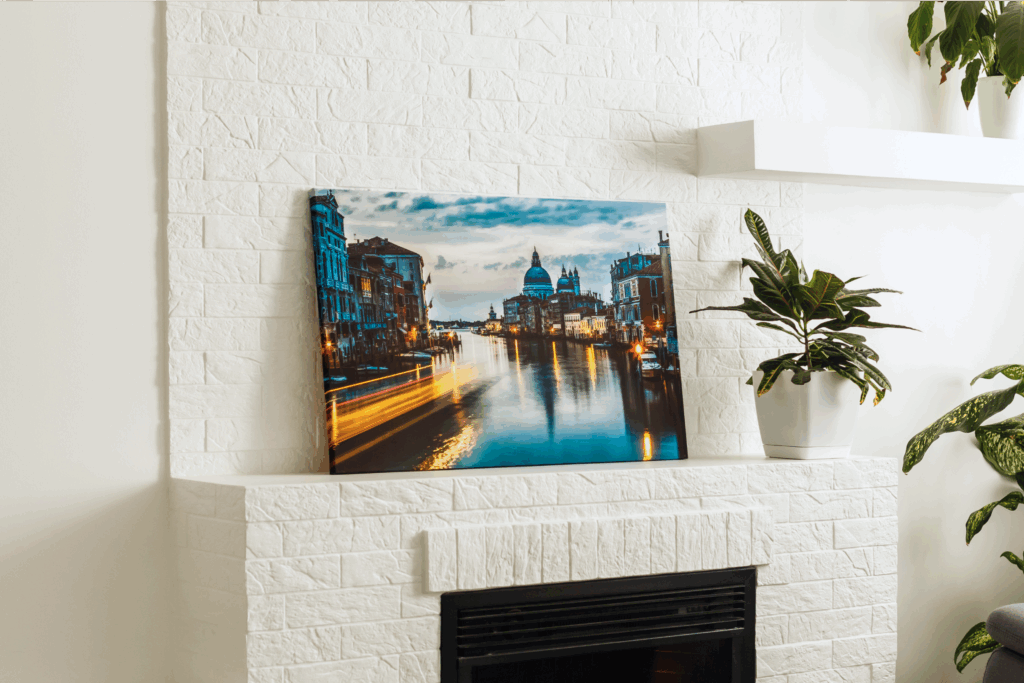Bring your design ideas to life
When it comes to customizing apparel, embroidery vs screen printing is a common debate. Each printing method involves a different process but both offer a professional, polished look.
The best option for your clothing brand depends on the desired outcome. Screen printing is ideal for detailed designs and bulk printing, while embroidery involves stitching thread for a more textured, high-end finish.
In this article, we’ll explore the differences between screen printing and embroidery – the good, the bad, and the complexity of each method – to help you decide what best suits your project.
Key takeaways
- Embroidery excels in durability for smaller designs on high-end garments like jackets, uniforms, and professional wear needing a textured, premium finish.
- Screen printing is best for bulk orders, especially for casual wear like t-shirts and hoodies, providing vibrant, colorful designs at a lower cost per item.
- Embroidery works best for simple designs, such as company logos, but struggles with intricate details and complex color gradients compared to screen printing.
- Screen printing offers a more efficient process for large, complex designs with various colors, but setup costs can be high for small orders.
- Embroidery machines are ideal for creating permanent, high-quality designs that withstand frequent washing, making them perfect for luxury branding.
What is embroidery?
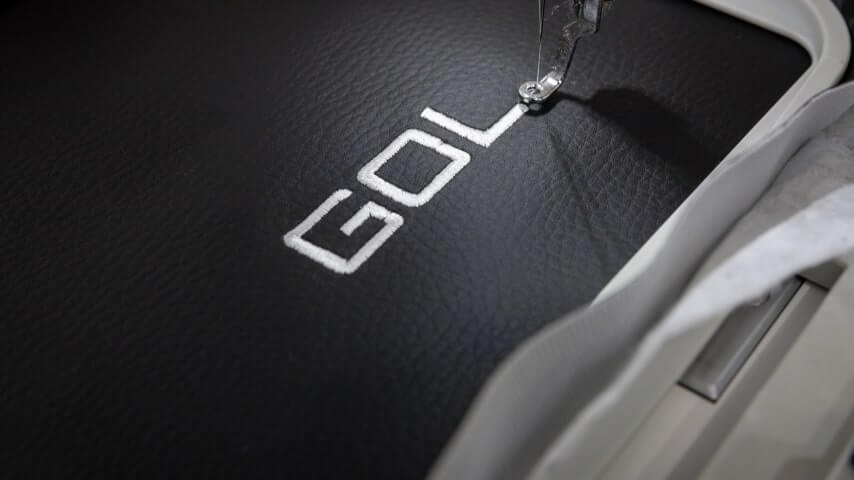
Embroidery is a customization method in which machines stitch thread directly into fabric to create raised, textured designs. It uses thread to produce a premium and tactile sheen finish for crafting a logo, embroidered text, or artwork.
- Digitizing the design: Convert the design into a digital format compatible with embroidery machines to guide the stitching process and stitch types.
- Stitching the design: Place a garment in the machine to stitch the design directly into the fabric using different thread colors.
- Finishing the embroidery: The completed design is durable as is, but operators may reinforce it by checking for loose threads and sealing with adhesive.
Unlike screen printing, which lays ink on top of the fabric, embroidery weaves thread stitches into the material, embedding the design as part of the garment itself. Stitching with modern embroidery machines achieves professional designs with a textured finish.
Usage and application
Embroidery is ideal for limited quantities of high-end items like polo shirts, hats, jackets, and uniforms. The designs are typically smaller and act as an accent detail.
Businesses prefer an embroidered design for products where a polished and professional appearance is crucial. To add a lasting touch to your branded apparel, check out our Catalog’s embroidery products to find the best items for your business.
Pros and cons of embroidery
| Pros | Cons |
|---|---|
| Possible to fully automate the threading process | Costly for larger embroidered designs |
| Long-lasting and permanent designs | Limited range of thread colors |
| Adds a premium look with a raised texture | Not ideal for highly intricate designs |
| Works well on various apparel fabrics | Expensive for large-scale production |
| Ideal for branded luxury apparel | Slower process for high-volume production |
What is screen printing?
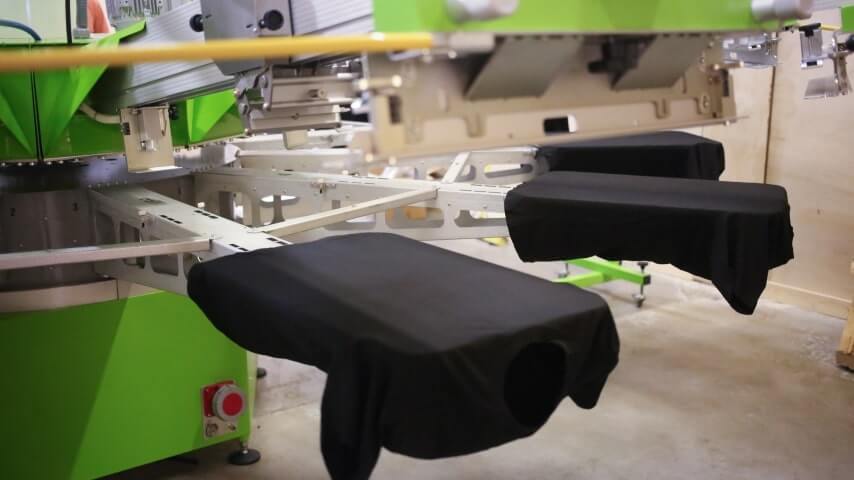
Screen printing, also known as silk screening, is a widely used customization method that involves preparing a design stencil or mesh screen and using it to press inks onto a fabric, creating vibrant and durable designs.
- Design preparation: Each color in the design requires a new mesh screen. Print operators separate the design into layers, preparing one screen for each color.
- Ink application: Operators press the ink through the mesh screen onto the fabric using a squeegee. The process continues one color at a time, with careful alignment for layering.
- Curing the design: Once all layers are printed, the garment goes through a curing process. Operators apply heat to bond inks onto the fabric, smoothing out the garment and making the design long-lasting and resistant to wear.
The screen printing process is a more traditional approach that differs from newer methods relying on digital printers. While screen printing involves a longer manual setup, the actual printing process is quick, can handle multiple runs, and yields long-lasting results that withstand multiple washes.
Usage and application
Businesses often use this t-shirt printing method for promotional items because it provides excellent coverage on a wide range of different fabrics, including cotton, polyester, and blends.
Screen printing also offers great flexibility for producing large quantities of printed products, making it a go-to option for bulk orders of cotton t-shirts, tote bags, and print-on-demand sweatshirts.
Pros and cons of screen printing
| Pros | Cons |
|---|---|
| Cost-effective for bulk orders of screen-printed items | High setup costs for smaller runs |
| Handles intricate designs accurately | Prone to cracking without proper care |
| Works well on various fabrics and blends | Requires a new mesh screen for each color |
| Creates durable and long-lasting designs | Less detail than digital printers |
| Ideal for t-shirts, hoodies, and tote bags | Complex screen creation process |
Make it happen today!
Embroidery vs screen printing: Complete comparison
Each method offers unique advantages, from the vivid prints of screen printing to the premium look of an embroidered logo. As different as they are, both methods share some qualities.
If you haven’t decided between screen printing or embroidery just yet, find the key differences in our comprehensive embroidered vs screen printed comparison below.
| Screen printing | Embroidery | |
|---|---|---|
| Quality | Vivid high-quality prints | Unique tactile stitching |
| Design complexity | Possible to create more complex designs | Limited to smaller, simpler designs |
| Durability | A durable option for casual garments Can flake and fade without proper care | Unparalleled durability with machine-threaded sewing |
| Sustainability | Excess waste production for bulk orders makes it less eco-friendly Sustainable manufacturers are an option | Organic cotton threads are biodegradable Polyester options are less eco-friendly but produce limited waste |
| Minimum order | Minimum order requirement is usually 5-100 items | No minimum order requirements with Printify |
| Production time | Quick production after the stencil is set up | More complex process slightly extends production time |
| Average cost | Best for large orders but costly for one-time prints Extra colors increase expenses | Great for smaller on-demand orders Extra colors increase expenses |
Material and appearance
Embroidery designs involve stitching thread directly into the fabric, creating a raised effect that adds depth and durability. This makes it ideal for thicker fabrics like cotton, denim, or polyester blends, where the thread holds well onto the garment without excess weight.
Popular uses for embroidered garments:
- Professional wear
- Company uniforms
- Luxury brand logos
Screen printing uses an ink transfer method that lays ink flat on the fabric surface, producing a smooth, finished product. Screen printing works exceptionally well on softer fabrics like cotton or blends for t-shirts and hoodies.
Screen printing is best for:
- Casual wear items
- Sports apparel
- Promotional items
Cost comparison

Embroidery is practical for smaller quantities of custom, high-end items like jackets and hats. Although there are no significant setup costs for materials, embroidery machines are quite expensive. Larger designs with multiple thread colors also increase the cost.
Screen printing is more cost-effective for large orders. Though setup costs are higher, especially for designs with multiple colors, the price per item decreases significantly once the screens are made. This makes it ideal for bulk orders of promotional items or t-shirts.
Level of detail
Embroidery excels in creating durable designs and small text. The different types of stitching with embroidery machines add dimension and durability, enabling curved lines, eye-catching outlines, fully color-blocked details, and simple gradients to a lesser extent.
However, embroidery is best for simpler designs, as these machines can’t easily replicate fine details or complex color gradients that’s often seen with digital ink printing.
On the other hand, screen printing can achieve fine details and intricate designs. The screen printing process allows for precise ink transfer, making it perfect for large logos, complex visuals, or designs that blend colors.
While screen printing offers greater detail and smoothness than embroidery, it might still lack the high-resolution capabilities of DTG printing and dye sublimation.
What and when to choose

Choosing between embroidery and screen printing depends on your product’s specific needs, the type of design, and the fabric. Both methods have unique strengths, making them ideal for different applications. Let’s break down when to choose each method.
When to choose embroidery
Embroidery is the go-to option for a high-end look and long-lasting, durable designs. It works well for smaller quantities of high-quality garments where the raised texture and stitching threads add a premium feel.
Opt for embroidery designs when you’re working on branded apparel, company uniforms, professional garments, or items that need to withstand frequent washing.
Embroidery – final verdict:
- Best for small embroidered logos and stitching on uniforms, jackets, or caps.
- Ideal for simple tactile designs without too many details on thicker fabrics and blends.
- Embroidery machines aren’t ideal for covering large areas with complex designs.
When to choose screen printing
Screen printing is ideal for projects that require vibrant, bold designs, especially for large quantities of t-shirts or other casual wear. This method works best when you need a smooth, flat design that covers a vast design area.
Opt for screen-printed garments when you need bright, colorful designs or when the design needs to stand out on different fabrics.
Screen printing – final verdict:
- Perfect for promotional items like t-shirts, hoodies, or tote bags.
- Best for complex designs that need bold ink coverage for a quality result.
- Screen printing is ideal for producing bulk orders due to the higher setup costs.
FAQ
The choice between embroidery vs screen printing depends on your project.
Embroidery is ideal for adding a small company logo design or embroidered accent to garments that need durability and a premium look. In contrast, screen printing works well for large logos and bold designs that involve gradients or various colors, especially for bulk promotional items.
Between embroidery vs screen printing, embroidery costs slightly more, especially when investing in an in-house embroidery machine for intricate designs. Screen printing is more cost-effective when producing large quantities, but is more expensive for small batches.
While embroidery is durable, it struggles with fine details and complex visuals compared to screen-printed designs. It’s also not suitable for lightweight garments and isn’t as efficient as screen printing for a larger design area or bulk orders.
Pros of embroidery:
- Durable and long-lasting on thicker garments.
- Provides a textured, professional look.
- Ideal for a company logo and small designs.
Cons of embroidery:
- Costly for larger designs and big batches.
- Limited in replicating intricate visual effects.
- Not suitable for lightweight fabrics.
Logo digitizing can be a tricky process requiring specialized software. However, Printify makes this easy by offering automatic logo digitization for all merchants. Upload a design to an embroidery product in the Printify Product Creator, and we’ll digitize it within 24 hours.
We’ll notify you once digitization is complete through your My Products page. Progress updates are also available on the Order Details page under pre-production. If any issues arise, we’ll place the order on hold so you can make design corrections before it goes to production.
To summarize
When deciding between creating screen-printed vs embroidered apparel, consider your project’s size, the product fabric, and design complexity.
Embroidery is best suited for small, high-quality designs that last, while screen printing excels in larger projects with colorful, complex visuals.
If you want to try custom embroidery and screen printing with none of the associated equipment costs, leverage print-on-demand and start designing with Printify.



